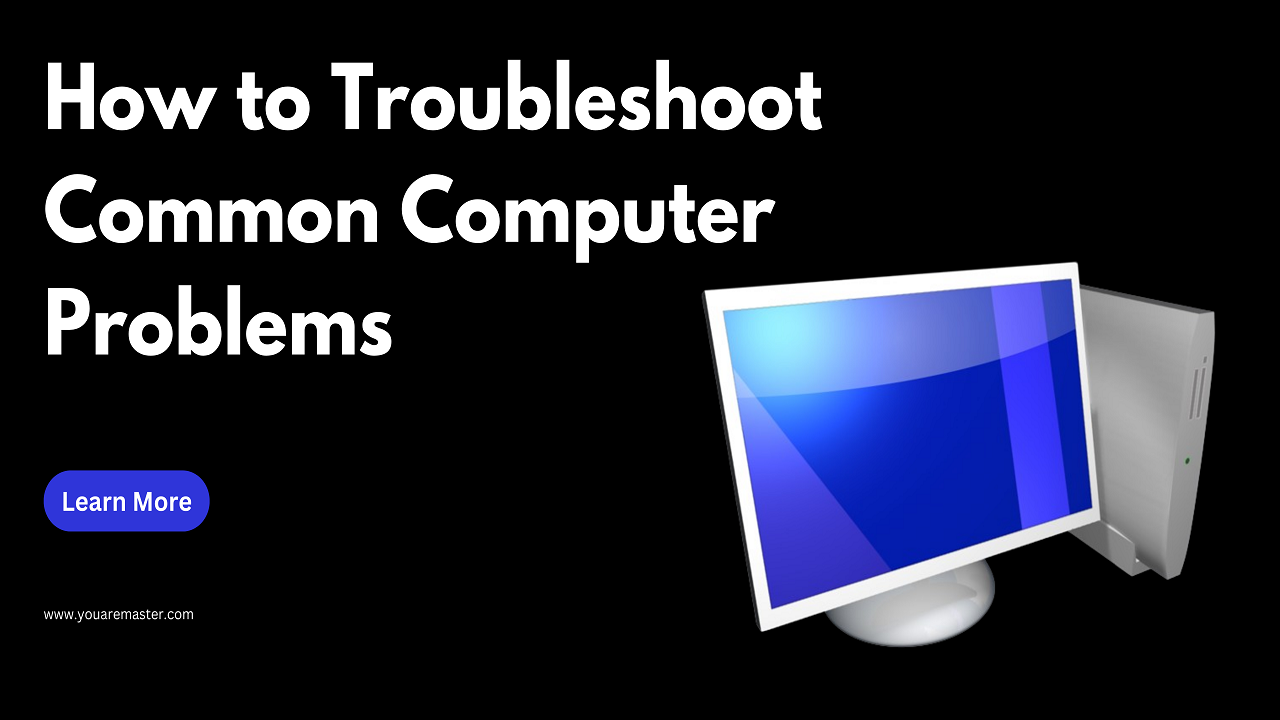How to Troubleshoot Common Computer Problems
In today’s digital age, where computers are indispensable tools for both personal and professional use, encountering technical issues is almost inevitable. From hardware malfunctions to software glitches, these problems can disrupt productivity and cause frustration. However, with a basic understanding of troubleshooting techniques, many common computer issues can be resolved efficiently.
Introduction to Common Computer Problems
Computers can encounter a variety of issues, ranging from minor annoyances to significant malfunctions. These problems may manifest as slow performance, system crashes, hardware failures, or software errors. Understanding the root cause of these issues is the first step towards resolving them effectively.

Importance of Troubleshooting
Effective troubleshooting is essential for maintaining the optimal performance and functionality of your computer. By identifying and addressing problems promptly, you can minimize downtime, prevent data loss, and prolong the lifespan of your hardware and software components.
Basic Troubleshooting Steps
Hardware Issues
Hardware problems often stem from issues with physical components such as the motherboard, CPU, RAM, or storage devices. Common symptoms include system crashes, hardware failures, and erratic behavior.
Checking Physical Connections
Ensure that all cables, connectors, and peripherals are securely plugged in and properly seated. Loose connections can lead to intermittent issues or complete hardware failures.
Diagnosing Hardware Failure
If your computer fails to boot or displays error messages indicating hardware problems, perform diagnostic tests to identify the faulty component. Tools like the Windows Memory Diagnostic or manufacturer-specific diagnostics can help pinpoint the issue.

Software Problems
Software-related issues can arise from incompatible programs, corrupt system files, or malware infections. These problems may manifest as error messages, application crashes, or system instability.
Identifying Software Glitches
When troubleshooting software issues, start by identifying the specific program or process causing the problem. Review recent changes or installations that may have triggered the issue.
Resolving Software Conflicts
Conflicts between software applications or incompatible drivers can lead to system instability. Update your operating system and drivers regularly to ensure compatibility and security.

Troubleshooting Specific Issues
Slow Performance
One of the most common computer problems is sluggish performance, which can be caused by various factors such as insufficient RAM, fragmented storage, or background processes consuming system resources.
Clearing Temporary Files
Regularly clean up temporary files, cache, and browser history to free up disk space and improve system performance. Disk cleanup utilities can automate this process.
Updating Drivers and Software
Outdated drivers or software can hinder performance and leave your system vulnerable to security risks. Check for updates regularly and install them to ensure optimal performance and stability.
Internet Connectivity
Issues with internet connectivity can disrupt online activities such as browsing, streaming, or online gaming. Common culprits include router problems, ISP issues, or wireless interference.
Checking Modem/Router
Verify that your modem or router is powered on and properly connected to your computer or network devices. Restarting the router or performing a factory reset can often resolve connectivity issues.
Resetting Network Settings
If you’re experiencing persistent connectivity problems, resetting network settings on your computer can help resolve configuration errors or conflicts. This process may require reconfiguring network preferences afterward.
Startup Errors
Startup errors can prevent your computer from booting into the operating system, resulting in a black screen, error messages, or system crashes. These issues may stem from corrupt system files or faulty hardware.
Booting in Safe Mode
Boot your computer into Safe Mode to troubleshoot startup problems caused by incompatible drivers or software. Safe Mode loads only essential system files, allowing you to identify and address the underlying issue.
Repairing Operating System
If your computer fails to boot or displays error messages during startup, use recovery tools such as Windows Startup Repair or macOS Recovery to diagnose and repair system files.

Utilizing Built-in Diagnostic Tools
Modern operating systems offer built-in diagnostic tools and utilities to help users troubleshoot common issues. These tools may include disk cleanup, system restore, disk defragmentation, and malware removal utilities.
Seeking Professional Help When Necessary
While many computer problems can be resolved through DIY troubleshooting, some issues may require professional assistance. If you’re unable to resolve a problem or suspect a hardware failure, seek help from a qualified technician or IT support specialist.
Preventive Measures for Future Issues
To minimize the likelihood of encountering common computer problems in the future, implement preventive measures such as:
- Regularly updating software and drivers
- Installing reputable antivirus software
- Backing up important data regularly
- Avoiding suspicious websites and downloads
- Keeping your computer physically clean and well-ventilated
Conclusion
Troubleshooting common computer problems is a crucial skill for computer users of all levels. By following basic troubleshooting steps, utilizing diagnostic tools, and seeking professional help when necessary, you can resolve issues efficiently and maintain the optimal performance of your computer system.
FAQs
- How often should I update my computer’s drivers and software?
- It’s recommended to check for updates at least once a month to ensure optimal performance and security.
- What should I do if my computer keeps crashing?
- Start by checking for software updates and running diagnostic tests to identify any hardware issues. If the problem persists, seek professional assistance.
- Is it safe to use third-party diagnostic tools for troubleshooting?
- While third-party tools can be helpful, it’s essential to research and choose reputable software from trusted sources to avoid potential security risks.
- Why is my internet connection slow?
- Slow internet speeds can be caused by various factors, including network congestion, ISP issues, or problems with your modem/router. Troubleshoot by checking your connection and contacting your ISP if necessary.
- What are some signs of a failing hard drive?
- Symptoms of a failing hard drive may include unusual noises, slow performance, frequent system crashes, or error messages indicating disk errors.
